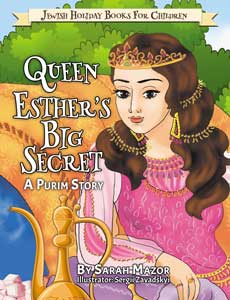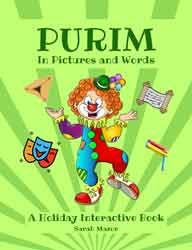 |

Today is:
|
 |
 |
|
|
rosh hashana, yom kippur, sukkot, simchat torah, shmini atzeret,chanukah,hanukkah,purim,pesach,passover,shavuot, lag ba'omer,tisha b'av |
|
|
|
Purim in a
Nutshell
Click Here for More Holiday Articles
Purim
is celebrated every year on the 14th day of the Hebrew month of
Adar.
The
holiday of Purim is celebrated on the 14th day of Adar
and in Jerusalem on the 15th day of Adar. Purim
commemorates a time of trepidation, suffering, and terror for the
Jewish population of Persia living in the fourth century B.C.E.
Purim is also a celebration of survival against many odds. The
Scroll (book) of Esther, Megillat Esther in Hebrew, recounts
the story of Haman, one of the most colorful villains in
Jewish history. It also tells the remarkable tale of Mordechai
and his niece, Esther, who were instrumental in the resurgence of
Jewish spirit and courage. Haman who devised a plan to
annihilate the Jews of Persia, obtained the approval of the Persian
King Ahasuerus, and just when he was about to set his evil plot in
action, an unexpected turn of events foiled his efforts. The Jewish
Queen Esther and her uncle Mordechai managed to thwart
Haman's vile scheme, and brought upon the fall of the house of
Haman.
The Jewish population of the City of Shushan celebrated their
good fortune with song, dance, and feast. Queen Esther established
the tradition of the annual festival of Purim, in commemoration. The
tradition has been kept up with since.
Purim is a Holiday of Unity
The three main observances of Purim, all comply with
the theme of togetherness.
-
Kri-aat Megillah - gathering
in synagogues for the reading of Megillat Esther
-
Matanot Laevyonim - giving
charity to the poor, and
-
Mishloach Manot - exchanging
gifts of goodies with relatives, friends, and neighbors
More Purim Traditions
-
A Festive Meal
-
Masquerading, Carnivals and the Purim Shpiel (entertaining skits based on the historical
account of the Persian king, Mordechai, Haman, and Queen Esther).
-
Eradicating the name of Haman. This is accomplished by stumping feet and making noise with graggers
upon the mention of Haman's name.
Hamantashen (triangular pastries filled with poppy seed - "mon" in Yiddish) are eaten to denote the obliteration of
Haman (the "mon" in the pasty represents Haman).
-
Some people write the name "Haman" on the bottom of their shoe, and obliterate the name with every
step they take.
This, in a nutshell. For more on the
history, traditions, customs, and celebrations of Purim click below:

Mazor Guide for Purim brings you much more about the holiday, its
meaning and its traditions... See the links below.
 |
"Purim in Pictures and words" recounts in detail
the extraordinary story of the miraculous reversal of fortune of
Persian Jewry in the days of Xerxes I, the emperor who is more
widely known as King Achashverosh.
The story begins with King Achashverosh's grandiose party and ends with Mordechai's appointment
as the Persian king's top minister. The complicated story involves a
beauty contest, servants conspiring to kill the king, and an evil
plot by an evil man to eliminate the Jewish people. This informative
coloring book, which is based on the text of Megillat Esther (the
Scroll of Esther), also includes an overview of the main customs
and traditions associated with the celebration of the holiday.
Recommended for children between the ages of 6-11. Enjoy!
Click
Here to Purchase! |
|
|














